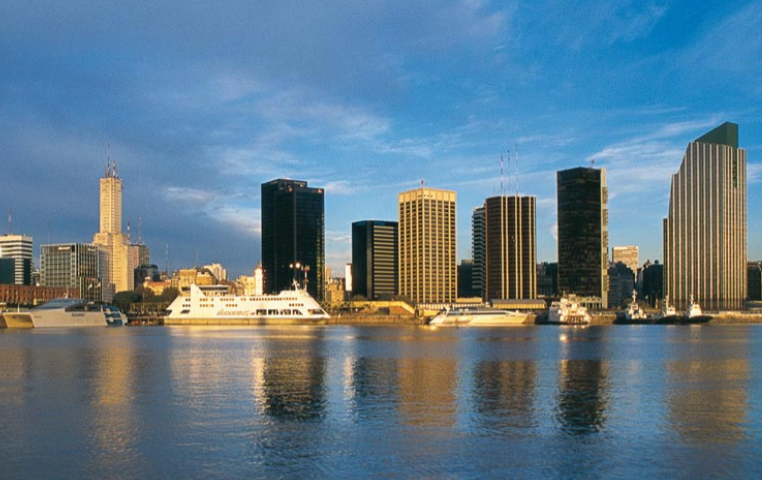Argentina’s Investment Regime: Key Facts
What to know about Argentina’s new investment promotion regime.
BY IGNACIO ALBE AND WILLIAM TOBIN
In July 2024, both houses of the Argentine legislature passed the Milei administration’s Ley de Bases, an omnibus bill enacting the flagship items within the president’s economic reform agenda. This was a significant legislative victory for a government that controls less than 14 percent of the National Congress. The legislation included a provision known as the Incentive Regime for Large Investments, or RIGI (Régimen de Incentivos para Grandes Inversiones), a generous series of incentives designed to build investors’ confidence in the Argentine economy.
Argentina now confronts an opportunity that it has not seen in decades to reset the financial conditions in its long-troubled economy and achieve some semblance of normalcy. It has an opportunity to break free from the monetization-fueled, public-sector dominated, subsidy- and price control-dependent economic model that has led it into multiple inflationary and stagnation traps.
Through the use of “sole purpose vehicles” incorporated in Argentina, RIGI enables investors both foreign and domestic to be granted legally binding and consistent terms for tax, foreign exchange, capital repatriation and dividends, accelerated amortization, and customs duties, for thirty years. The law applies to investments of more than two hundred million dollars in the forestry, tourism, infrastructure, mining, technology, steel, energy, and oil and gas sectors (except with higher minimum investment requirements for certain oil and gas activities). It also provides additional benefits for investments in excess of one billion dollars.
Specifically, the scheme presents the following provisions:
- Reduction in federal income tax from 35 percent to 25 percent.
- Reduction in the federal dividends tax from 7 percent to 3.5 percent after the eighth year.
- Lifting of the requirement to expatriate capital through sale of export earnings in the official exchange market after the fourth year (after the third year for investments over one billion dollars).
- Elimination of export taxes after the third year (after the second year for investments over one billion dollars).
- Elimination of capital controls imposed on lines of credit, debt servicing, or dividends paid abroad.
- Elimination of trade restrictions on imports or exports for goods that are used or produced by the sole purpose vehicle.
In practical terms, the RIGI is designed to isolate investors from the most pervasive structural risks in the Argentine economy for the term of a major capital investment. It is an instrument designed to provide investor security in an economy notorious for its recurrent boom and bust cycles and bouts of punishing inflation, driven and reinforced by highly unorthodox policies such as restrictive capital and trade controls.
RIGI and macroeconomic stability: The chicken and the egg?
In Argentina, which is presently mired in more than a decade of persistent stagflation and policy volatility, there are two sides to RIGI. On one side, it shields investors from instability in the expectation that large capital projects will curtail the conditions that have led to macroeconomic woes (for example, by diversifying the economy while attracting much-needed capital). On the other side, investors understand that generous incentive carveouts are not enough given the deeply entrenched nature of Argentina’s economic instability and uncertainty over the durability of its current political pact.
Many investors are likely waiting to see how well the Milei administration’s stabilization plan fares and, perhaps even more importantly, concrete evidence that the country has truly changed. For this to work, a sizeable share of the electorate and the political classes need to commit to the cause of fiscal responsibility.
After all, Argentina’s history is full of examples of dramatic policy shifts. The market-friendly conditions of the 1990s were quickly reversed in the early 2000s, following the economic implosion of 2001, and more specifically by the Kirchner governments (2003-2015). The Macri administration’s (2015-2019) disappointing quest to turn Argentina into a beacon for foreign direct investment (FDI) was followed by the economically disastrous Fernandez administration (2019-2023). Provincial policy adds an additional layer of complication. Several provinces, such as the economically hegemonic Buenos Aires and the mineral-rich but business-restrictive province of La Rioja, have denounced RIGI.
It’s a bit like the chicken-or-the-egg problem. Investors need to see strong macroeconomic results and lasting voter adherence to fully buy into RIGI’s promise. However, that economic stabilization agenda in turn requires strong capital flows, which Argentine officials believe can only be attracted by the generous incentives enabled by RIGI itself.
This dilemma lies at the core of the administration’s plans: The government is deeply set against any devaluation of the peso, and it has made clear that it will only lift its strict currency and capital controls (cepo) once certain conditions are met. Chief among these conditions is that enough foreign currency reserves have been accumulated to prevent any wild exchange rate fluctuations that may feed an inflationary spike.
Despite these challenges, however, RIGI has already started to show promise. On October 22, the International Monetary Fund released new investment estimates for the Argentine economy that placed the country’s investment as a share of gross domestic product above the Latin American average for the first time in decades. The clear gap between the April and October outlooks can be explained largely because of policies such as RIGI and the gradual recovery of creditor confidence in Argentina, perhaps best exemplified with the drop in Argentina’s country risk (as measured by the country’s emerging markets bond index). A slight drop in Argentina’s real growth outlook was not significant enough to explain the hike in expected total investment as a share of gross domestic product.
By attracting stronger foreign capital flows, the RIGI is poised to become a powerful tool for Argentina’s stabilization, easing the attraction of the much-needed foreign currency to finally end the cepo, which since 2011 has been a recurrent thorn for Argentina’s growth and a major concern for potential foreign investors. However, the Milei government cannot revoke this capital control scheme without an assurance that doing so will not create a run on the peso. Still, strong FDI flows will not materialize until well after the cepo has ended and investors are convinced that the administration’s policies will outlast the stabilization period’s resulting economic hardship and austerity. It is unclear which will come first, but what is clear is that the economy’s present recession must be converted to sustained growth in a constrained time frame, or risk provoking a rapid decay in the social pact between the Milei administration and its base.
The RIGI presents a momentous opportunity for Argentina—an instrument to help jumpstart the growth it once enjoyed—but its ultimate outcome still hangs in the balance.
The immediate future looks promising for the Milei administration, but it would be wise not to delay its agenda. In Argentina, President Javier Milei remains popular, with a 56 percent approval rating, a year into his presidency. Abroad, he has a strong personal relationship with incoming US President Donald Trump. A potential new deal with the International Monetary Fund, perhaps eased by strong support from the United States, could provide fresh funds that would allow the country to wind down the cepo and strengthen the country’s economic recovery in 2025. Ahead of the October 2025 elections, furthering popular and investor confidence in these reforms will also be top of mind.
As such, the Milei administration should prioritize ending the cepo as soon as possible, while furthering the reform agenda through the elimination of long-standing and price-distorting subsidies for producers and consumers that represent a sizable cost to the state. While these moves may generate some inflationary movement, they will also help unleash the potential of the Argentine economy and more firmly cement Argentina as an attractive destination for foreign investment in what is shaping up to be a turbulent year for other emerging markets.
Ignacio Albe is a project assistant at the Atlantic Council’s Adrienne Arsht Latin America Center, where he focuses on Argentina, Brazil, and hemispheric affairs.
William Tobin is an assistant director at the Atlantic Council’s Global Energy Center, where he focuses on international energy and climate policy.
This article was originally posted on the Atlantic Council’s New Atlanticist blog.
Republished with permission.













